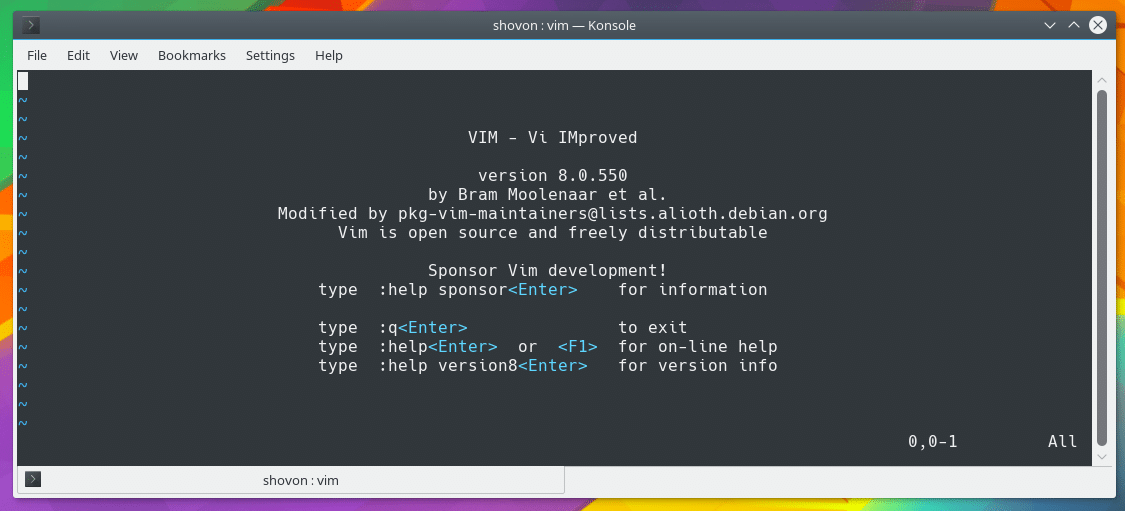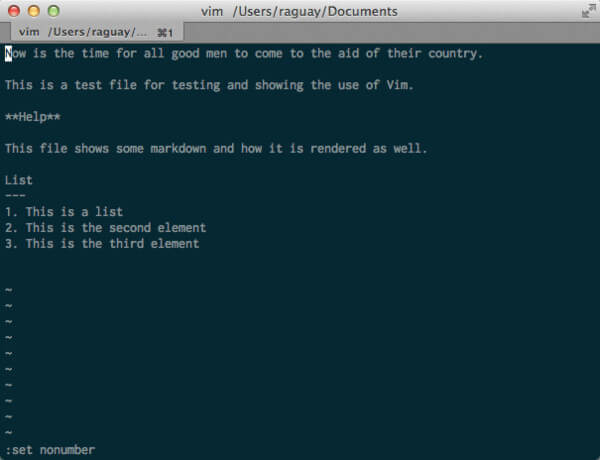
- #Install vim editor for mac install
- #Install vim editor for mac full
- #Install vim editor for mac code
You begin in NORMAL mode, which is where you will spend most of your time once you become familiar with vim.

Vim has different modes, unlike most editors you have probably used. You can open multiple files by passing multiple file arguments. You can pass a filename as an option and it will open that file, e.g.
#Install vim editor for mac code
Why vim can't do it? What's wrong in doing what other tools do?īTW, I've often witnessed colleagues editing their code with eclipse+CDT and compiling CMake based C++ projects from the console while I compile these same projects from within Vim.You simply type vim into the terminal to open it and start a new file. It's because they have started integrating clang. It's not because these IDE have made progresses. We have witnessed great improvement since a few years. As others have pointed out C++ is not a language where all IDEs shine. Of course official IDEs have refactoring, and refactoring in Vim is quite painful. I must admit though that we need a plugin to integrate a debugger, and also that these plugins aren't exactly very ergonomic. Unless in your vocabulary IDE definition has shifted since then, Vim is an IDE. Well, Vim has the same features than the ones that 20 years old Turbo Pascal/C++ IDEs had. I'm more interrested in supporting multiple compilation modes and working with multiple projects simultaneously, and also in having idiomatic C++ snippets. I don't care about seeing the list of files nor the list of tags in a side pane. I have described parts of my configuration on quora: We can use plugins to improve our user experience when developping in C++ with Vim. My point is "Vim can only be used as an IDE if you squint really hard". To be clear, my point is not "Vim can't be used for serious programming, with or without plugins, use an IDE for that". And your OS as the development environment is is. You just use Vim as the text editor it is. From that angle, wasting time fighting an architecture that's not designed for that to begin with is a waste of time. From that angle, the text editor is only a text editor and it is easy to see how building that whole contraption out of Vim's architecture is impossible and why that's a silly idea.

You get something that looks like an IDE but hey! that's probably all that matters, right?.įrom the other angle, the IDE is a platform that allows a number of separate processes to interact via a unified API to provide code completion, profiling, tokenization and so on. Autocompletion? YCM! File explorer? NERDTree! Class explorer? Taglist or Tagbar! Compiler? Syntastic! And so on and so forth. From that angle, "turning Vim into an IDE" or "using Vim as an IDE" is only a matter of adding and configuring whatever plugin needed to obtain that look. From that angle, the text editor is the central part and every other feature is simply tacked on one of its four sides.


One could consider an IDE from two very different angles.įrom one angle, the IDE is a maximized window with a bunch of buttons at the top, some kind of tabs, a file explorer on the left, a class explorer on the right, a debugger/profiler/terminal/search pane at the bottom and, in the middle of all that, a text editor with autocompletion. Even Emacs (Vim's arch enemy) would be a better choice than Vim at this point. You will never manage to turn Vim into a reasonable IDE alternative. You can run Visual Studio in a Windows VM.
#Install vim editor for mac install
You can install Windows on your Mac and thus run Visual Studio directly.
#Install vim editor for mac full
Switching to a generic text editor from a full fledged IDE just because you bought a Mac is a very strange idea.


 0 kommentar(er)
0 kommentar(er)
